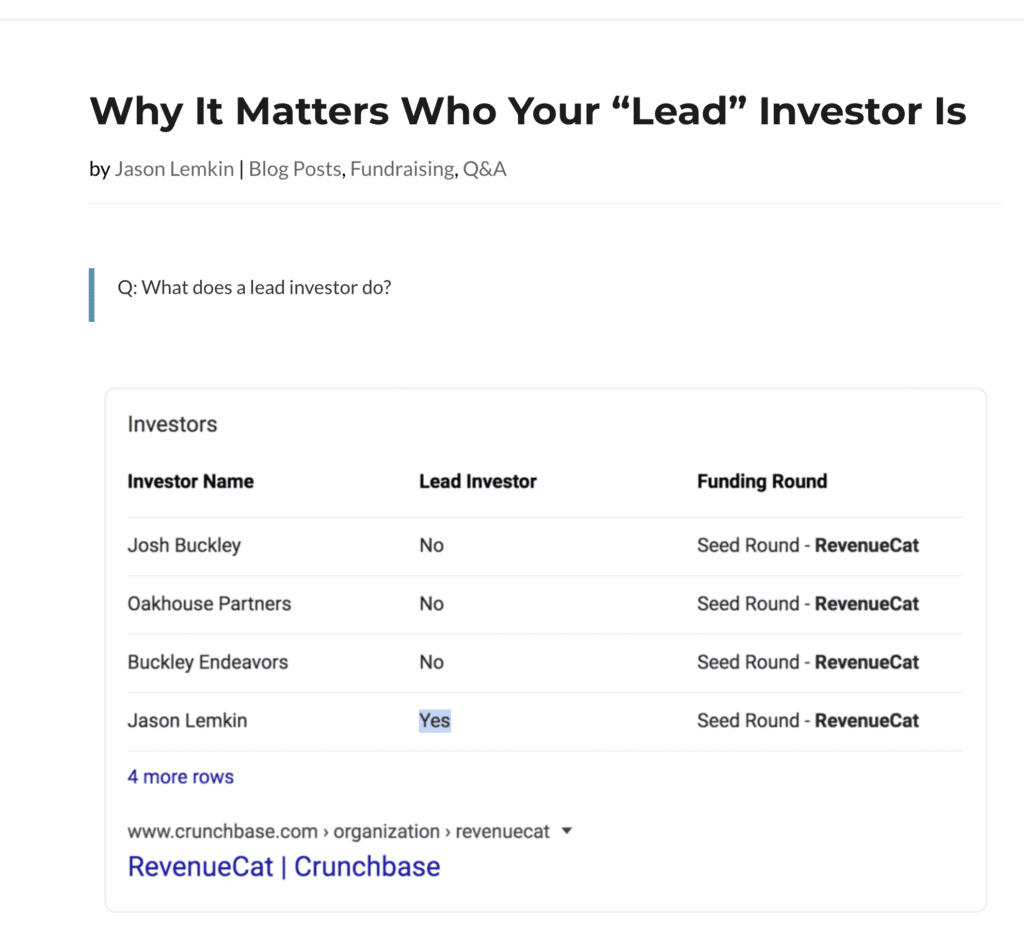I’ve never gone Truly Big in any of my start-ups, not in the Slack or Datadog way, let alone the Calendly or Notion way. But, over the years as both a founder and a start-up exec, I have raised over $40m in Venture Capital across 4 successful start-ups. I’ve also pitched over 110 VCs. Yes, 110. A lot of them have come and gone in that time. And 100 of those 110 were for just one tough Series C financing.

But of all those rounds, those 110 VCs, those $40 million dollars in capital, and all that, there’s just one little slice that Was the Best $500K I Ever Raised. And this informs almost everything I think about VCs “adding value”, fundamental change-the-company value.
The time was about 14 months after Adobe Sign / EchoSign launched and 17 months after we raised our Series A. My approach was to go, not Big, but not Lean either. The Middle I guess. So we raised $2.5m in a Series A funding, which was enough with the team I had and the approach I went after (pretty aggressive in the beginning), to get us about 18 months from funding date.
It was a rough start. But by about 12 months in, it was clear we had something — just not enough yet. We had a handful of great enterprise customers, many dozens of tech leaders and midsized customers, and maybe a thousand or so smaller customers. And a decently sizeable pool of free users.
But it wasn’t enough. We weren’t, probably (can’t know for sure) going to get a Series B on just that, back in early ’07, at least, and we didn’t have enough revenue to cover the salaries of the team.
I couldn’t go backward. We had too many customers, too much going on, and there wasn’t any fat.
So I did three things:
- I built a model that convinced me if we could get another 6-8 months down the road, we’d be fine and could raise our Series B. Which turned out to be true. Later, when the time was right, we got 3 top VC offers for our Series B in just one week.
- I stopped taking a salary. This wasn’t brilliant in some ways, but I did take equity instead. I ended up making almost 10x on this equity, so in the end, all was well and it was a great investment, I guess. It was sort of a dumb idea in hindsight, for reasons I discussed here. And while it helped a little, it didn’t help that much. But I guess it bought us another 2 months or something like that.
- And I had several honest conversations, over time, with my VC (Tae Hea Nahm of Storm Ventures). And he got his partners, over some fair and reasonable concerns, to give us another $500k. And that made the company.
Everything else, for funding, in the end, didn’t really matter. The first $2m? Great, but we had multiple offers. Whatever. The $6m in Series B? Again, 3 offers in 2 weeks. Great, and truly, deeply, muchly appreciated — but not really a big event given that it was pretty easy to get and low stress. But that $500k gap between Series A excitement and the results necessary for Series B — that was the most critical $500k I’ve ever gotten. Otherwise, we would have died.
And what’s so common today is big party rounds, or rounds with 5, 10, or 20 smaller VC funds. That gets a lot of great people on the cap table, and oftentimes it’s the right decision. But be wary of one thing — without a real lead investor, no one saves anything for tougher times.
This “Gap financing” — it’s especially important in SaaS, because SaaS doesn’t explode, it compounds. You can see the future. And for many of you, you may end up because of that, in the same spot as me: doing reasonably well, you can see a good future … but you don’t quite get there in time. You may need a few extra bucks at a time when not everyone will believe in you, at a time which will be the difference between death and success. So:
- Be mindful of the downsides of party rounds in SaaS — If You Have a VC Option Instead. It’s great to have 20 cool execs invest in your company. And they won’t ask for anything, no board seat, no financials, no nothing. But what are the odds they’d collectively have written that second, $500k check for us? Zero. Absolutely, Zero.
- Make sure your VC partner has juice at his or her firm. A gap round isn’t always going to be easy to get through the partnership. If your VC doesn’t have much juice in his firm, it may be that much harder to get gap help.
- Always, always, be transparent in SaaS. After all — it’s predictable. Make sure your investors never get a surprise in SaaS, because there’s no reason for one. They’ll see the Gap coming early, too. Give them the time they need. Because in Venture Capital, it turns out Getting the First Check is Easy. The Second Check is much harder in many cases. And if it’s a Gap or Bridge check and you aren’t just 100% killing it — oy. Give plenty of foreshadowing. There should be no big surprises in SaaS from a core business metrics perspective, at least.
- And pick a VC you Trust. I know this is hard sometimes to figure out for sure on the front end, but do your diligence. If you guys do trust each other, it’s a huge difference. Every early-stage VC check is not only a company/market risk — it’s a huge people risk. If your VC knows you are good, and doing everything possible to succeed, and trusts you, and you are in a decent market with decent results — your odds of getting the Gap Funding goes way up.

And another way to solve these issues are of course, at least in theory and assuming you don’t spend it, is to just raise a few extra bucks whenever you raise anything. Mark Suster has a classic post on that here.
>> Anyhow, go enjoy your Party Round. Your funding announcement on TechCrunch. And all that.
But I can tell you vis-a-vis venture funding, across 4 companies and > 10 years and $40m+ in funding … all that mattered for me was that smidge of Gap Funding. That little bit. And I’m not the only one. I could make you a list of very successful SaaS CEOs who just barely made it to the Series B phase no matter how much they’d raised before. For me, and many others — everything else in venture funding is just a little event, a little task, like the 100 other things you do.
A bit more here:


